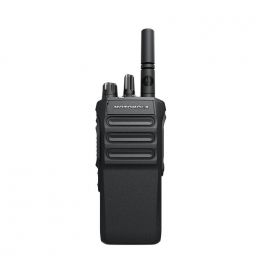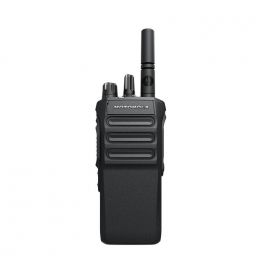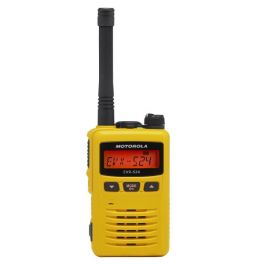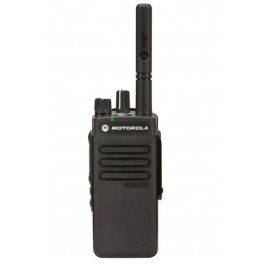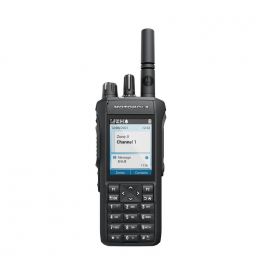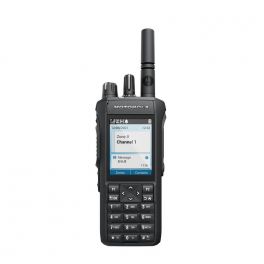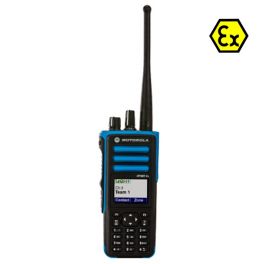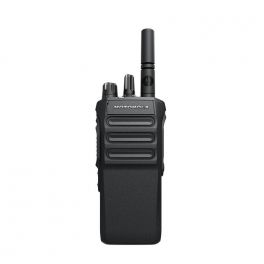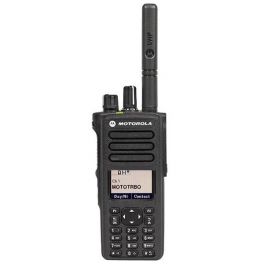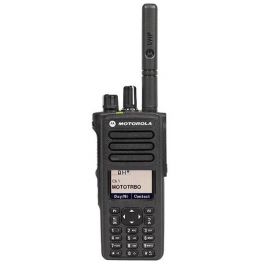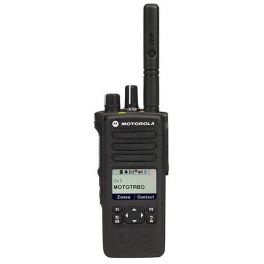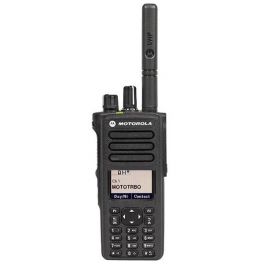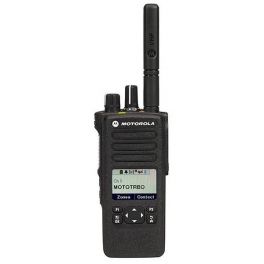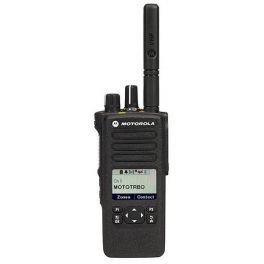
Digital Licensed Two-Way Radios
- Ref: MOR7AUHFCompare
- Ref: MOR7PNPTUHFCompare
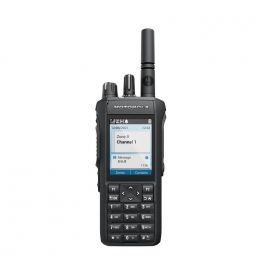
Motorola R7 Full-Keypad TIA Premium UHF
Call us for availability£1,035.00£756.99 £908.39 Incl. VATRef: MOR7PFPTUHFCompare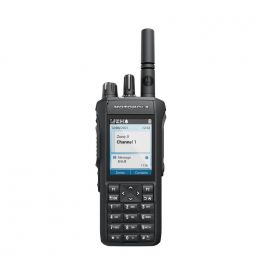
Motorola R7 Full-Keypad TIA Premium VHF
Call us for availability£1,035.00£756.99 £908.39 Incl. VATRef: MOR7PFPTVHFCompare- Ref: MOEVXS24YUKCompare
- Ref: MODP2400EVHFCompare
- Ref: MOR7FPTUHFCompare
- Ref: MOR7FPTVHFCompare
- Ref: MODP4801VATEXCompare
- Ref: MOR7ATVHFCompare
- Ref: MODP4800UHFECompare
- Ref: MODP4801UHFECompare
- Ref: MODP4601UHFECompare
- Ref: MODP4801VHFECompare
- Ref: MODP4600EUHFCompare
- Ref: MODP4601VHFECompare
While it is true that analogue radios are the foundation of two-way radio communications, digital two-way radios build on existing analogue features as well as providing more sophisticated features. For example, these include enhanced text messaging, IP connectivity and rugged designs to withstand tough conditions to name a few. Digital signals are represented by the numbers 1 or 0. Depending on the number of the digital signal, the voltage values differ. Furthermore, digital signals use an algorithm, which can distinguish between talking and background noise. Whether your radio transmits wireless or wired digital signals, enjoy crystal-clear communications.
Apart from fantastic sound quality, digital two-way radios provide many important benefits. These include:
- Greater coverage – a digital two-way radio will provide excellent clarity throughout its coverage range. Meanwhile, an analogue radio does not do this as effectively. While an analogue radio can produce a good signal within its peak performance range, its audio fades out once the signal reaches its maximum range. Alternatively, a digital signal remains a lot stronger and clearer, even when reaching the limits of its coverage range.
- More simultaneous talking paths – by operating in dual-capacity direct mode (DCDM), digital radios can share the same channel through alternating time slots. Time slots move extremely fast, meaning that more simultaneous talking paths are available on every channel without the risk of degradation. What´s more, a single radio channel can come with all the important information that you need – enhanced text messages, unit ID and status buttons. Therefore, digital radios provide a higher level of efficiency.
- Battery life built to last – digital two-way radios tend to have a much longer battery life compared to analogue radios. This is because digital radio transmitters are not always “on”. An extended battery life makes these radio models perfect for long shifts at work or all-day events. This way, your communications will run seamlessly. You don´t have to worry about swapping and recharging your radio batteries throughout the working day.
- Digital Signal Processing (DSP) technology – digital two-way radios have DSP as a market standard. Digital Signal Processing is a technology that works to distinguish human voice from other noises including machines and wind. It allows for natural-sounding communications even under the noisiest conditions. Ideal for use in motorsports and industrial environments, hear and be heard by colleagues and friends with excellent clarity every time.
- Emergency features – when working in more remote conditions or alone, your safety remains of uttermost importance. Use your digital radio to make emergency calls via Lone Worker or Man Down functions. If a worker fails to press the PTT button to confirm their safety, the Lone Worker feature means that the radio will go into alert status. An alarm will be sent to other members of the workforce. Man Down uses special motion sensors to detect and raise an alarm to others in certain circumstances. For example, these include the user moving too much or too little, or the radio being positioned at a different angle than usual for an extended period of time. With these features in mind, your digital radio will not let you down.
- Applications for further functionality – for the optimisation of digital platforms, software applications are at your disposal. These software applications use integrated IP networks. Take your digital two-way radio communications one step further.
With all of this in mind, our digital two-way radios are the future when it comes to hands-free communications. They are the perfect solution for high-noise environments or places where the signal may be poor. Equipped with advanced features and extended battery life, digital radios are reliable, flexible and made to last. Throughout the coverage range of your radio, enjoy clear-cut communications every step of the way. For two-way radios that do more, look no further than our range of digital licensed radios.
